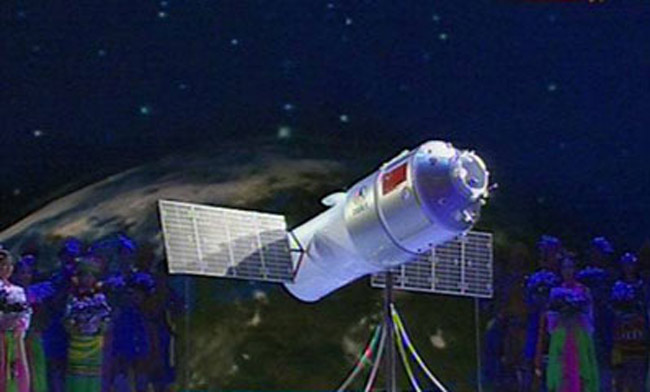China Shifts Space Station Project Into Overdrive

COLORADO SRINGS, Colo. — China is planning to launch three spacecraft between 2011 and 2016 to form the basis of a manned space station, the director of the Chinese Manned Space Engineering Office (CMSEO) said Wednesday.
China plans to launch its first space station module, Tiangong 1, during the first half of 2011, said Wang Wenbao, CMSEO director general, addressing an audience of American and international space industry workers here at the 26th National Space Symposium.
The endeavor is part of an ambitious space program for China, which is only the third nation, after Russia and the United States, to independently launch humans to space. The country's third manned spaceflight, the Shenzhou 7 mission in 2008, featured China's first spacewalk.
"Space is the common resource of all humankind," Wenbao told SPACE.com. "The basic curiosity, desire to explore the unknown, are all the same universal human nature."
During the second half of 2011, China intends to launch the unmanned Shenzhou 8 mission, which will meet up with Tiangong 1 in space, performing China's first in-flight rendezvous and docking.
Then, China plans to follow up with two more missions — Shenzhou 9 and 10 — in the first and second halves of 2012 respectively, to "make breakthroughs and master the necessary technologies of rendezvous and docking," Wenbao said through a translator.
The Shenzhou spacecraft are designed to carry three astronauts, or taikonauts. But these subsequent rendezvous and docking flights will only be manned if the first unmanned foray goes well.
Breaking space news, the latest updates on rocket launches, skywatching events and more!
"For Shenzhou 9 to be manned or unmanned depends on Shenzhou 8," Wenbao told SPACE.com.
The most challenging aspect of planning for this feat has been designing the docking mechanism and the "training of astronauts to maneuver and masterfully control the spacecraft on orbit," Wenbao said.
The Tiangong 1module is intended as the cornerstone of a Chinese space outpost that will host research in the life sciences, materials sciences, and agriculture, including the cultivation of seeds in space.
The second module of the Chinese space station, Tiangong 2, is set to debut during a 2013 liftoff. Tiangong 3 will follow sometime in 2014 to 2016. Then China will continue constructing the space station between 2016 and 2022. Once established, the laboratory should run for about three years.
"Astronauts can stay in the space station for long term and carry out space experiments on a large scale," Wenbao said.
To supply this orbiting laboratory, China is developing a cargo-carrying spacecraft that will hold no less than 5.5 tons (5,000 kg), Wenbao said. That's about twice as much cargo capacity as Russia's Progress unmanned spacecraft, which currently services the International Space Station (ISS), and a little less than the Japanese H-II Transfer Vehicle (HTV), which also flies to the ISS.
"Our cargo spacecraft will be developed on the basis of our manned spacecraft and space lab," Wenbao said.
China's launch into to the field of human spaceflight began in 2003, with the successful launch of a Shenzhou spacecraft carrying astronaut Yang Liwei into orbit. A second spaceflight, this time with two astronauts aboard, followed in 2006.
China's Shenzhou spacecraft are derived from the three-module Soyuz spacecraft built by Russia. They consist of an orbital module, a crew capsule and a propulsion module. But unlike Russia's Soyuz, the Shenzhou's orbital module has its own solar arrays, allowing it to linger in orbit for months after its crew has returned to Earth.
China is also looking to foster closer relationships with the space programs of other nations, he said. He invited the representatives of the world's space agencies to come visit China's space facilities "to discuss cooperation with our experts in the field of manned space and together to promote the development and the progress of space technology."

Clara Moskowitz is a science and space writer who joined the Space.com team in 2008 and served as Assistant Managing Editor from 2011 to 2013. Clara has a bachelor's degree in astronomy and physics from Wesleyan University, and a graduate certificate in science writing from the University of California, Santa Cruz. She covers everything from astronomy to human spaceflight and once aced a NASTAR suborbital spaceflight training program for space missions. Clara is currently Associate Editor of Scientific American. To see her latest project is, follow Clara on Twitter.
